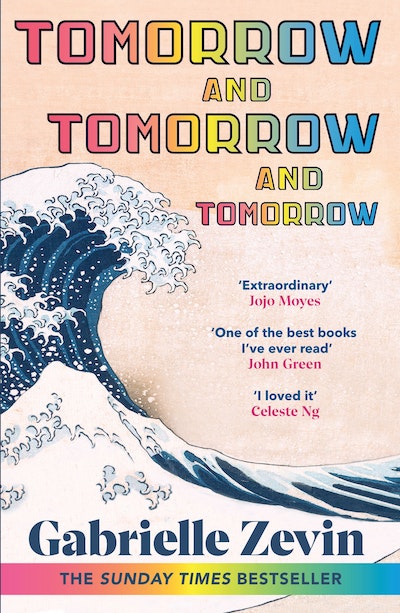Yet another book that I avoided because ‘how could it possibly live up to all the hype?’ and then yes, it does, and I feel stupid for not reading it before now. The extraordinary TOMORROW AND TOMORROW AND TOMORROW (Penguin Random House 2022) by Gabrielle Zevin feels like a YA novel at first but as we grow and change with the characters as they age, it very much develops into a layered and complex story of the deep and messy love that comes with long friendships, in this case beginning in childhood and ending with the characters much older, spanning 30 years. The YA vibe comes from the narrative of youthful idealism, self-identity, rivalries, ambition, and characters making choices that will change the course of their lives. This is woven seamlessly into a mature and wise book about loyalty, regret, tragedy, fame, betrayal, forgiveness and creativity.
Sam and Sadie meet when they’re both about 11 years old, at a children’s hospital. Sam is there receiving treatment and Sadie is visiting her sister. Anyone who has cared for someone with a chronic illness or someone required to have multiple surgeries over time will recognise the beige hospital, with its smells and sounds and terrible sights, seeing it as we do through the eyes of these young people for whom the world is not yet anything other than something to be avoided as much as possible. Their escape is playing the old video games, passing the consoles back and forth, wordlessly joining forces to defeat enemies or collect gold coins or perfect the classic timing of a spectacular jump.
They meet again, quite by accident, at a train station. Years have passed, and they now inhabit the world of grown-ups. Yet they are still young, naïve, ambitious and edgy, full of energy and vim. The spark of friendship that took hold in that hospital all those years before is reignited as they join forces again, this time in the intellectual and creative spaces of game design.
Other characters – Dov and Marx and Ant – are equally well crafted and the entire book feels authentic and true.
This is important because much of the book is about the gaming world and although I know very little about that experience, this novel brought it to life in a way far better than if someone had tried to explain it to me. The different genres of games, the go-to patterns and prototypes, the skill required to change even one tiny feature of a game so that the blood looks more viscous or the sea more realistic or the clouds more natural or the way a character moves more believable and true … all of this and more is explained throughout the story without actually having to be explained at all. It is spoken of and problems are talked through, and along with the characters, we learn more and more about AI and technology.
But ultimately this is a novel about love and friendship. Different games – fighting, shooting, resource and farming, mining, building, adventure, quest, etc – echo what is going on in the lives of the characters. Games mimic life. Or perhaps, as we discover towards the end, life mimics games.
This is a truly exciting, exceptional and compelling book with a narrative I could not put down and characters I really cared about. The other side of tragedy is, of course, comedy, and the searing, witty, sharp and clever humour in this book balances the tragedy in an unusual way.

